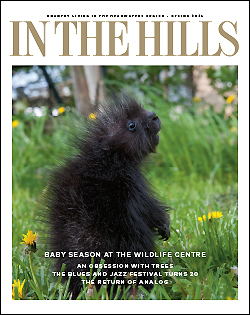The August Garden
Each season in the garden is filled with anticipation and regret. Late summer is no exception. By Liz Knowles
Each season in the garden is filled with anticipation and regret. Late summer is no exception.
By Liz Knowles
I think back to the explosion of colour provided by the day lilies over the past month, now sadly coming an end, and to the last of the lilies, the orientals. Casablanca is one of my favourite orientals.
Standing over a metre tall, its striking white blooms stand like sentinels in the shade garden in August, and its heady fragrance wafts indoors in the evening.
Another choice late blooming lily has the outrageous name “Boogie Woogie.” It stands almost two metres tall and is a cross between the oriental lily and Lilium henryii.
August is the month when the Asteraceae or composite family really comes into its own.
The grass garden is chockablock with colour from various composites, while the various grasses — miscanthus, panicum, molinia and others — provide the vertical drama in the background.
In the white section of the grass garden, Echinacea White Swan and Aster ptarmicoides bloom for weeks on end.
The lavender is just going over in the adjacent section. Pink Echinacea spars with the bright red spires of Ipomopsis aggregata in the red section.
Agastache Heronswood Mist provides the vertical interest, while Dianthus amurensis Siberian Blue is the horizontal accent in the blue section.
And in the yellow section, there are at least five different yellow composites competing for attention!
Two of my favourite are Siliphum perfoliatum and Rudbeckia maxima.
The Siliphum is also known as the cup plant because water collects in the joint between the square stem and the up-facing leaves. It grows up to three metres in three months and towers over the grass garden.
Its only competition for height and stature comes from Miscanthus floridus over in the lavender section!
The red hot pokers, or Kniphofias, made quite a statement in the grass garden last month.
Kniphofia ex star of Baden Baden has proved to be a reliable perennial in the well drained grass garden, as has Crocosmia lucifer.
Well drained soil seems to be the answer for overwintering many of the plants from South Africa and the Middle East.
The abundant rain this summer has benefitted not only all the trees and shrubs, but also Phlox paniculata.
Two of the main perennial beds are ablaze with hot pink, red, purple and white phlox, and not one plant is showing any sign of mildew. Phlox paniculata Blue Paradise is fragrant. Its blue flowers have a dark eye.
A personal favourite is P. Little Boy, shown in the photo at right.
It is one of the shorter cultivars at 0.5 metres and has lilac-blue flowers with a white eye. If deadheaded immediately, many of these should re-bloom next month.
One final word on a little known perennial that blooms from early July to frost: Persicaria amplexicaulis Firetail has a multitude of pink spikes for months on end.
I can almost guarantee that when people come to visit the garden it’s the first plant that they enquire about.
****
Liz Knowles gardens at Larkspur Hollow in Hockley Valley.













